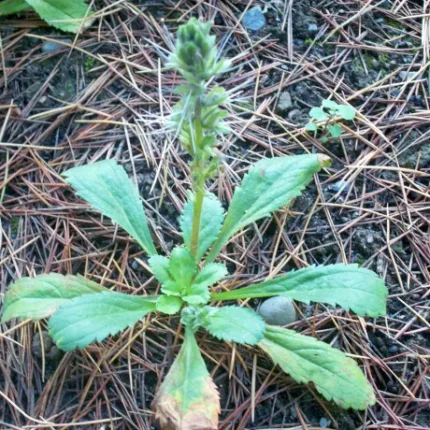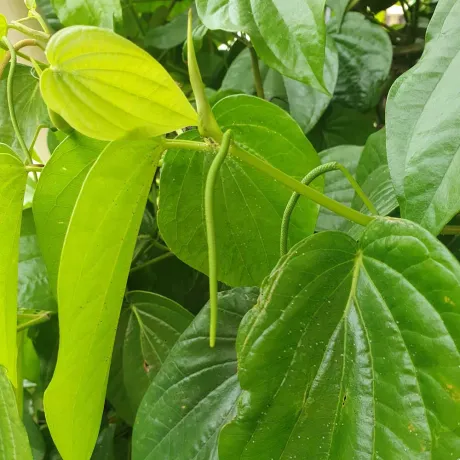Brhat trayi quoted tambulaparni / nagavalli. However, caraka used tambula term only once (Su.5/74). It was not used ighantuy as medicine. Under dinacarya its usage in the form of ‘pan’ (tambula) was highlighted. Tambulapa svarasa is used for the preparation of ‘laghusutasekhara rasa’. Its expressed leaf juice is used as anupana for various recipes and it root is used as a substitute for kulanaja (A. galanga).
Botanical description – A perennial dioecious creeper; stems semi-woody, climbing by means of short adventitious roots; leaves 10-20 cm long, broadly ovate, slightly cordate, shortly acuminate, glabrous, glaucous on both sides, bright green or yellowish; male spikes cylindricl dense; female spikes 2.5-5 cm long, pendulous; fruits rarely produced, often sunk in the fleshy spike, forming nodule-like structures. Probably a native of Malaysia, cultivated all over India except the dry north-western parts.
Chemical constituents – α-terpinenem p-cymene, carvacrol, chavicol, allyl pyrocatechol, allyl catechol, eugenol, estrafol, oxalic acid, malic acid, amino acids etc.
Part used – leaves, root.
Uses – Essential oil from leaves is used in respiratory disorders. Leaf juice relieves sinus congestion and allays thirst.




Reviews
There are no reviews yet.